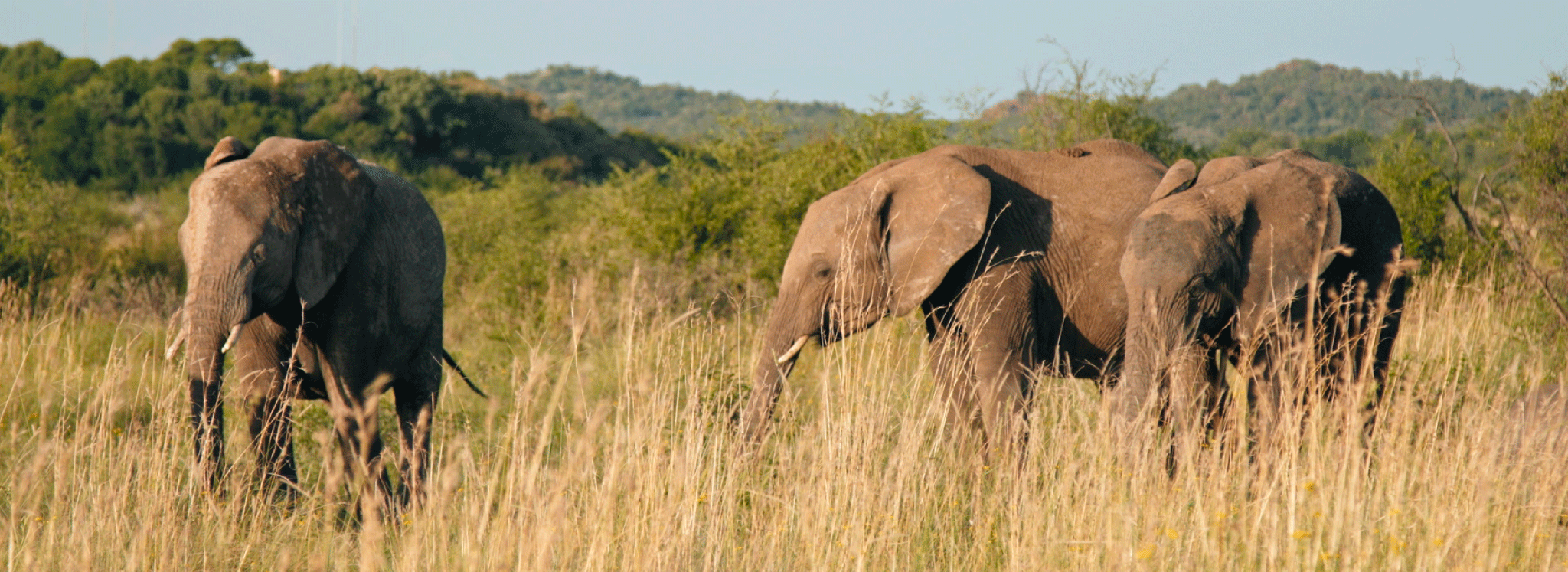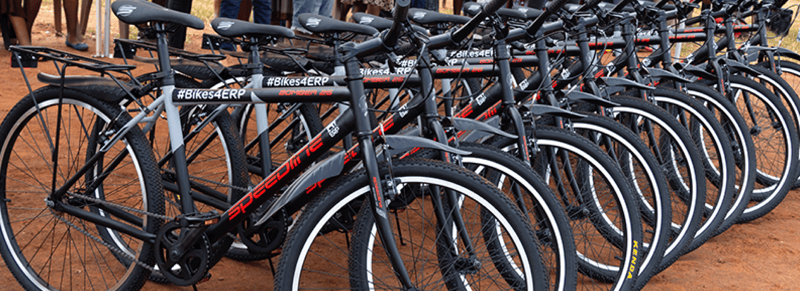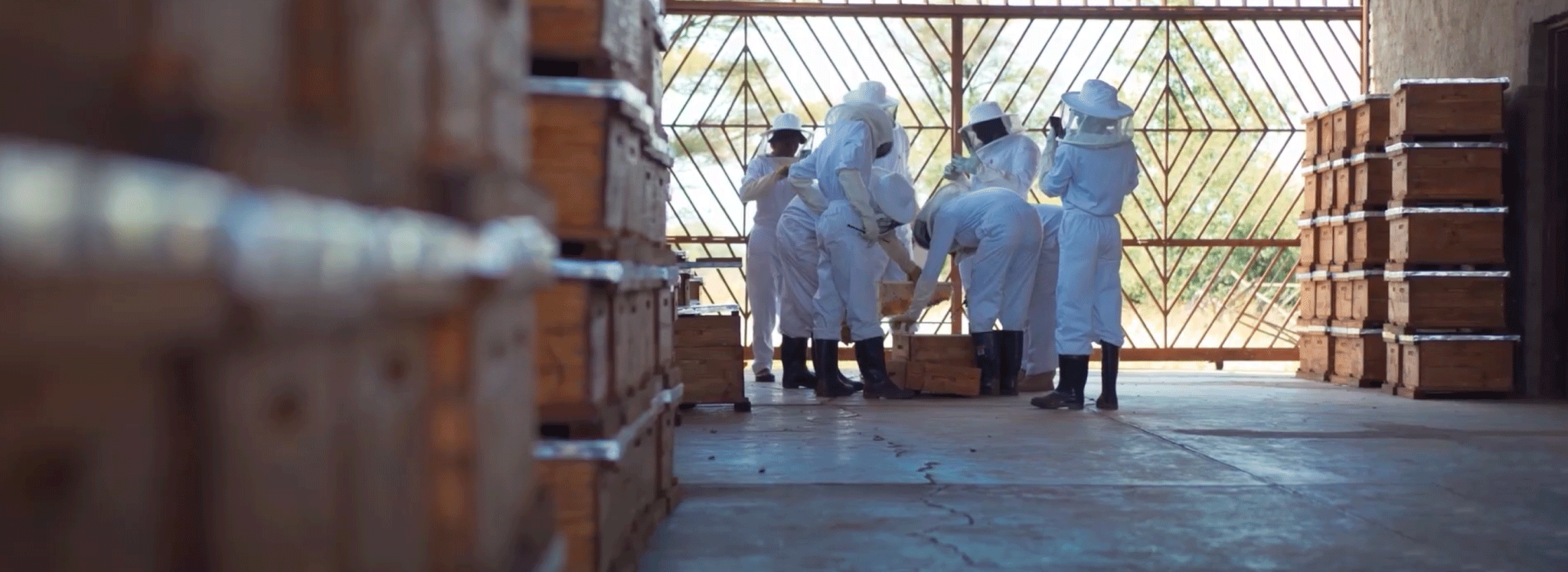Protecting wild elephants from extinction has reached a critical stage. With the black market taking advantage of the demand for elephant ivory, wildlife trafficking and human-elephant conflict is driving these noble beasts toward extinction.
The statistics are staggering.
Over the past 60 years, more than 4.5 million elephants have been killed and even as it stands today, Africa is losing approximately four elephants every hour.
African Forest elephants have decreased in population by 60% over the past 50 years, and the African Forest elephant population has declined by more than 85% over the past 30 years.
As we celebrate World Elephant Day on August 12 this year, we pause to think about the fate of the declining populations on the International Union for Conservation of Nature’s (IUCN) Red List of Threatened Species, including the African Savanna elephant and the African Forest elephant.
Threats to the Elephant Population
While conservation efforts have helped to slow declines, there are continued threats to elephant populations. Much work is needed to turn the tide of decline and stabilize the elephant population and protect these majestic animals.
Here are some of the most common threats:
Poaching
Illegal poachers kill tens of thousands of elephants each year for their tusks – sold as ivory – which often has a street value that exceeds that of gold. Elephants with large tusks are the most poached, and their eradication from herds those genes are less likely to be passed on – weakening the genetic health of future generations.
Despite anti-poaching laws and initiatives, poachers kill as many as 20,000 elephants every year as their own (untoward) way of surviving the extreme levels of poverty in Africa. The link? Poachers can often make more from selling ivory than they can from working jobs for several months.
The vast majority of the ivory ends up in China. A growing middle class is buying luxury ivory items, and lax enforcement of imports allows smuggled ivory into the country. A National Geographic report showed that less than one percent of shipping containers arriving in the Port of Hong Kong, for example, are inspected for ivory smuggling. This means that traders who are caught are seldom arrested or fined. As such, ivory smuggling has become a lucrative venture for criminal networks.
While most elephant ivory markets have been banned internationally by countries – and China having closed its legal domestic ivory market at the end of 2017 – illegal trading continues as several other Asian countries permit the sale or simply look the other way.
According to the United Nations Office on Drugs and Crime, wildlife trafficking and poaching is the fourth largest illegal trade globally, behind only arms, drugs, and human trafficking. UN reports also draw a stark, distinct link to serious crimes, including fraud, money laundering, and corruption.
The UN warns that if wildlife and forest crime and corruption that enables criminals are not addressed, many species will soon face extinction. Enforcement efforts are often spotty and unsuccessful.
Consider that any time an illegal shipment of ivory is uncovered.
That elephant is already dead.
Habitat Loss
Due to human population growth and expansion, elephant habitats are being destroyed or fragmented. Deforestation, urbanization, and agricultural expansion cause natural habitats to shrink, meaning elephants have fewer places to roam, find food sources, and create social structures. This also leads to increased human-elephant conflict as elephants encroach on human settlements.
Habitat loss is a significant factor in the decline of elephant populations. Over the past two decades, conservationists say that the geographic range of elephants has fallen by 30%. It’s estimated that a century ago, there were more than 12 million elephants in the wild. Today, it’s estimated that there are less than around 400,000 elephants remaining.
Human-Elephant Conflict
Conflicts arise when elephants damage crops or property and threaten human lives. Elephants roam over large spaces. As habitats shrink, migration routes get blocked. Food and water may become less accessible and this forces elephants to find other resources – often closer to areas where people live.
This can lead to elephants looking for crops or where food is stored in villages, causing considerable damage. The loss of crops and food sources may be life-threatening for both elephants and humans. In many cases, the people living nearby sometimes retaliate by killing elephants. It’s estimated that tens of thousands of elephants are killed by people across Africa yearly.
Climate Change
Changing weather patterns and drought conditions are impacting the availability of food and water sources for elephants. These changes to vegetation and ecosystems cause elephants to venture into new territories that then presents conflict with humans.
Drought conditions are also causing a shift in the vegetation in some elephant grazing areas. Grasslands are expanding, which are more favorable to grazing animals rather than forest elephants that rely on leaves and fruit. With fewer tree foods available, elephants are forced to find other food sources, such as agricultural crops.

Overcoming the Challenges of Declining Elephant Populations
The solution to solving these challenges to the elephant population requires several key things to happen. Continued awareness and education around the plight of elephants is desperately needed. General awareness about threats to the elephant population and making it socially unacceptable to possess ivory products can help influence people to take proactive steps. These insights are what World Elephant Day aims to shine a spotlight on.
There also needs to be a commitment by governmental bodies to protect and preserve elephant populations, including passing and enforcing strict laws on poaching and importing and exporting ivory. Better land planning and management, especially in migration corridors, will be crucial to protecting habitats.
While most conservation efforts have focused on the animals, coordinated efforts that address poverty in rural areas (with proximity to herds) is needed. Even those who see it as wrong, poverty-stricken people may resort to poaching as a means to survive their harsh economic predicaments. Without addressing the underlying poverty cycle, poaching will likely continue.
Changing this cycle will require coordinated efforts to uplift rural communities. Providing education and creating jobs with sustainable wages have become key to stopping poaching. If people living near elephants can meet their needs while coexisting, they are more likely to value elephants rather than see them as a threat.
To be effective, proactive measures must address the complex relationships between environmental and economic issues.
Elephants, Rhinos, and People
EPI-USE is a member of Group Elephant and donates one percent of its annual revenues to the Group’s non-profit, Elephants, Rhinos & People (ERP).
ERP was founded to preserve and protect Southern Africa’s wild elephants and rhinos while creating economic engines in impoverished rural communities that are near threatened populations.
Tactical Interventions
ERP helps address the welfare of elephants and rhinos while working to improve the welfare of people with tactical interventions. Projects range from elephant relocations, rescues, and monitoring, and targeted solutions to potential problems. For example, the ERP 911 elephant program saved the lives of 1,500 elephants in the Hwange National Park in Zimbabwe by drilling boreholes to provide access to water during severe drought conditions.
Creating Game Reserves
Creating secure, pristine game reserves and implementing ERP’s anti-poaching model creates sustainable protection for elephants and other animals while providing jobs and educational experiences. The ERP Melorane Game Reserve project also helps seed fund businesses around the conservation area, created a feeding program for orphans and vulnerable people, and implemented a math learning app for schools in neighboring villages.
ERP recently established a long-term partnership with the Barokologadi Communal Property Association (BCPA). Through a 90-year lease of the community-owned property, the Group established the Melorane ERP Game Reserve, a safe-haven for numerous animal species that ranges from elephants, rhinos and recently relocated giraffes.
Through our partnership with the Barokologadi, ERP established the Melorane Trust Fund, aimed at seed funding business around the conservation area, for the benefit of the Barokologadi people. One of the first businesses funded through the trust is the Basebo Learning Institute. It is accredited by the relevant South African authorities to provide learnerships in the technology sector. The learners are all Barokologadi beneficiaries.

#BIKES4ERP
#BIKES4ERP provides bicycles for children in rural South Africa. Children often live some distance away from schools. If they can get to school, they often arrive tired and unable to concentrate. Many drop out, continuing a cycle of poverty. Students participating in the program enter a “study to own” program where the student gets ownership of the bike after using it to attend school for two years.

Emergency Food Relief
During the pandemic, ERP provided emergency food relief to communities, including more than one million meals to those living near at-risk elephant and rhino populations.
ERP Honey
ERP Honey is helping seed the bee population to provide additional protection for sensitive and endangered tree species. Beehive fencing is a field-proven way of mitigating human-elephant conflict and reducing damage to trees and crops. Strategically placed hives can significantly reduce the risk of trees being uprooted by elephants.

P.E.A.C.E. Hubs
Planning, Education, Agriculture, Cooperatives, and Environment (P.E.A.C.E.) hubs are cooperatively run centers that connect to smaller satellite centers (pods) in surrounding areas providing educational opportunities and service delivery to rural areas. These hubs and pods provide IT infrastructure, distance learning opportunities, and access to health and family planning, including telemedicine..

Donate to ERP
When you donate to ERP, 100% of your donation goes directly to ERP’s fieldwork. Groupelephant.com businesses donate a portion of their revenues to cover all of ERP’s operational expenses and fund projects, so every dollar of your donation goes directly to fieldwork projects.
ERP works directly with communities that live adjacent to wild elephants and rhinos to improve conditions for animals and humans.
ERP is not run like a typical nonprofit. With the help of groupelephant.com, ERP runs like a business that seeds projects and solutions, all the while rapidly scaling the projects that show results. ERP relies upon building partnerships and applying solutions to address the challenge of poverty in rural communities along with elephant and rhino conservation.
Every project is carefully monitored and measured to ensure it meets the goals and delivers the expected impact.
You can make a donation to ERP online to help improve the quality of life for elephants and the people in rural areas that live in poverty.



